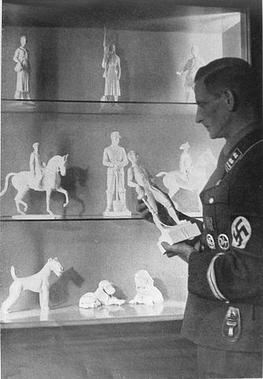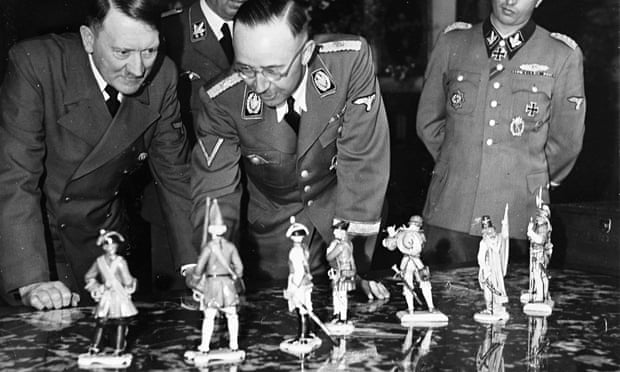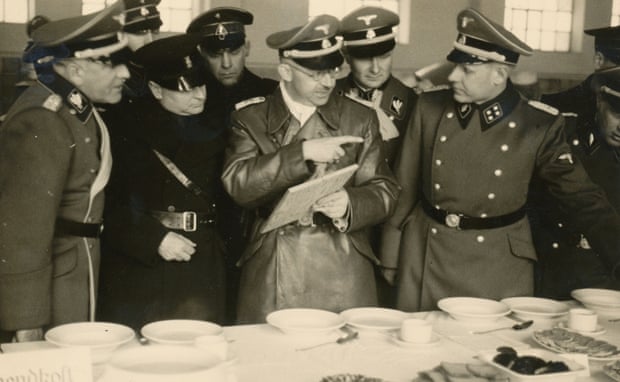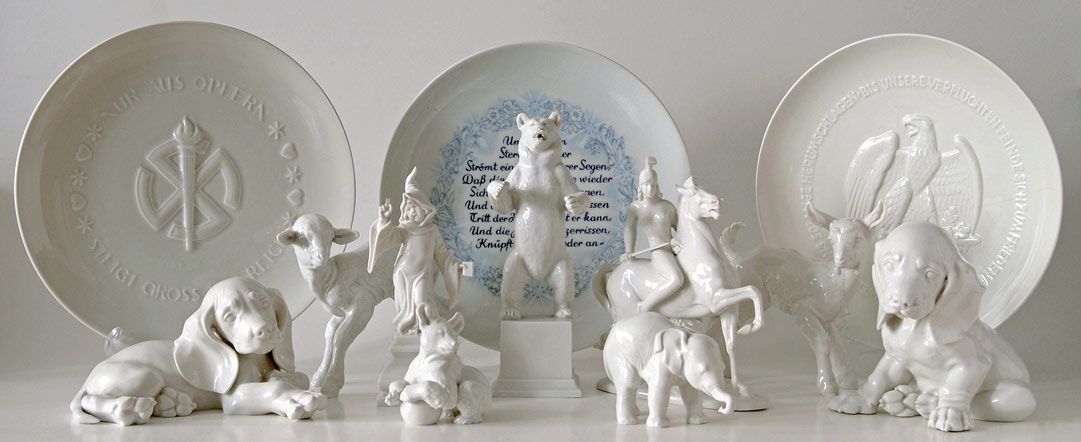Prior to 1936, the company known as Allach was pretty unremarkable. Based in Munich, it was owned by two business partners Franz Nagy and Karl Diebitsch. Both of the men were decorated veterans of the First World War with a background in artwork and porcelain. During the turbulent years of 1920s Germany, Diebitsch would go on to become one of the early members of the Nazi party earning himself a place amongst their inner circle in years to come.

In 1935, the Allach factory was built on land owned by Nagy and Diebitsch and specialized in intricate porcelain artwork. The firm had a small but loyal fanbase, one of them being Heinrich Himmler, then a chicken farmer in Munich. After the Nazis stormed to power in 1933, Himmler was rapidly rising through the ranks and would soon become the head of the political police in Bavaria. He would then go on to revolutionize the Allach porcelain company in a very dark way.
In 1936, Himmler took over the Allach porcelain factory through the use of the SS. Now renamed SS Porzellan Manufaktur Allach, Himmler’s aim was to indulge in his obsession with Aryan mysticism and Germanic culture of centuries ago. The factory then began to produce works that were representative of Himmler’s view on the world. Quite naturally, the SS controlled Allach business soon became a competitive company in the niche and profitable porcelain market of Nazi Germany.
Karl Diebitsch, the founder of Allach, was now an Obersturmbannführer in the Waffen-SS and the designer of the well-known all-black SS uniform. He was made director of the SS factory and was given an honorary title of Professor by Adolf Hitler. In the early days of SS control, Germany’s best porcelain artists were ‘heavily persuaded’ to sign a long term contract and the factory was soon producing world-class ceramic artwork. Under the mentoring of esteemed porcelain artists like Theodor Kärner who also worked with other prestigious Allach artists such as Meissen, Rosenthal and Hutschenreuther.
The majority of items produced at Allach as collectibles bolstered Nazi ideology by presenting idealized representations of peasants, historical figures and rural themes such as unbridled horses, bears, and medieval themes. Aside from its prestigious items, one of the most commonly produced and popular Allach items was their candleholder. Known as the Allach Julleuchter, the low production costs due to slave labor at Dachau allowed Germans of most social classes to own one. Made from unglazed stoneware, the candleholder was decorated with ancient Germanic Pagan symbols found during archeological digs around Germany. It was also a common gift to all SS officers to celebrate the winter solstice.

Due to its popularity, the output at the Allach factory throughout the 1930s significantly increased, it required modernization and resizing. In the meantime, Himmler decided to increase production by temporarily moving to a new facility near the infamous concentration camp of Dachau and take advantage of slave labor. Despite being intended as temporary, Dachau remained an Allach porcelain manufacturing hub even after the original factory in Allach was modernized and reopened in 1940.
The Allach camp in Dachau was located around 8 miles from the main concentration camp and was split into two enclosures dividing the Jewish and non-Jewish slave workers. The camp was home to around 9,000 people, including 3,000 Jews and 6,000 non-Jews. As the camp was liberated in 1945 by the US army and the subsequent fall of the Third Reich, the Allach factories all closed down, never to reopen.

Following the defeat of Nazi Germany, Heinrich Himmler would go on to commit suicide following capture by the British. However, the original characters of the Allach story, Diebitsch and Nagy, would go on to survive the war. However, their post-war years are very murky. It is believed that Franz Nagy still produced a very small amount of stoneware pieces in the post-war era.
For more stories on the dark history of global conflicts of the 20th century, check out our Military History department!














